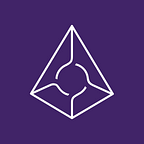The REP migration has been successfully completed. New production REP has been minted to all 56,338 unique accounts that held REP at the time of 11:01AM PT on July 9th, 2018. The transaction that froze the old REP contract indefinitely can be seen here.
REP Token Contract Address:
The new REP token contract address can be found deployed on the Ethereum main network below:
REP Token Contract: 0x1985365e9f78359a9B6AD760e32412f4a445E862
Exchanges, wallet providers, block explorers and other services that interact with REP will be updating the REP contract address over the coming day. If you’re using a service that is not reflecting the new REP token contract, please send them a message and let them know.
REP transfers will cost slightly more gas than transfers on the old contract due to additional logging. Please be sure to estimate gas properly when sending REP token transfers.
Note : The new REP token contract was created by another Augur contract, and the source code cannot currently be verified by EtherScan. The new REP token source code can be found on the Augur Core GitHub repository, located here. If you‘d like to verify the new REP token contract manually, a technical explanation can be found here.
The REP contract is also no longer pauseable, meaning all future updates to Augur will require a new Augur contract deployment, and a manual opt-in migration of REP (aka, an opt-in hard fork).
Augur App Release:
The final release of Augur App has been published to the Augur Github repository below. Users must download Augur App and run it locally on their machine. There is no hosted or centrally served deployment of the Augur reference user interface or Augur Node that connects to the Augur protocols contracts on the main Ethereum network. Users must run these services and software themselves.
Download the latest release of Augur App below:
The release notes include instructions on how to run Augur App. Augur App bundles the Augur reference user interface and Augur Node together into a double-click deploy process locally on your machine, and allows you to connect to an Ethereum node of your choice. This can be a locally run Ethereum node, or a remote node service such as Infura.
Please report all bugs and issues as GitHub Issues in their respective repositories so the Augur community can assess, manage and fix them.
Note: If you’ve installed a previous pre-release of Augur App locally on your machine, you will need to clear your configuration file in order to properly run the new Augur App and connect to the main Ethereum network. The location of the configuration file for each operating system can be found in the Augur App release notes.
FAQ & Disclaimer:
It is highly recommended and encouraged that users read the Augur FAQ and disclaimer prior to interacting with the Augur protocol on the main Ethereum network.
The Augur Protocol Contract Addresses:
Augur’s primary static contracts can be found deployed on the Ethereum main network at the contract addresses below:
Controller: 0xb3337164e91b9f05c87c7662c7ac684e8e0ff3e7
Universe: 0xe991247b78f937d7b69cfc00f1a487a293557677
Augur: 0x75228dce4d82566d93068a8d5d49435216551599
LegacyReputationToken: 0xe94327d07fc17907b4db788e5adf2ed424addff6
CancelOrder: 0x3448209268e97652bb67ea12777d4dfba81e3aaf
Cash: 0xd5524179cb7ae012f5b642c1d6d700bbaa76b96b
ClaimTradingProceeds: 0x4334477348222a986fc88a05410aa6b07507872a
CompleteSets: 0xa6bff4f91016c2b4aac140b2d8d7317b36afe5ab
CreateOrder: 0x7f27b0598949dbf9e539bbd217f15bf3f5e97999
FillOrder: 0x39c230f89981274177e79708c921582bd4bd0303
Order: 0x75d789ef6344579fbe75a4d2d9217ec23b005f8f
Orders: 0xd7a14019aeeba25e676a1b596bb19b6f37db74d2
OrdersFetcher: 0xa97a3e2ac932bc7a9c65393ee2c0f9d2f7b2e692
ShareToken: 0x2a21d90745dfed999aa0b6e08d648855c5f14663
Trade: 0x24e2b1d415e6e0d04042eaa45dc2a08fc33ca6cd
TradingEscapeHatch: 0x10b5589fc6922f5c27061ac79ad9a4af35e15806
The words of support received today are highly appreciated. Augur couldn’t have been built and deployed if it wasn’t for the hundreds of unique contributors, community members, software developers, hackers and advocates who have backed and worked relentlessly towards this vision for the past three years.
Please bear with the software developers and maintainers in the early days, as there will undoubtedly be compatibility issues, bugs, and a learning curve for new users of decentralized applications.
You can assist by jumping into Github issues and provide initial triage or fixes, answer others’ questions in the Augur Discord or Subreddit, or by providing helpful content for others, just as some examples. Augur is built from the ground up to be owned and operated by the people that use it. You don’t need to be an all star software engineer or specific type of power user to push the Augur protocol forward, anyone can.
Cheers,
The Forecast Foundation OU
